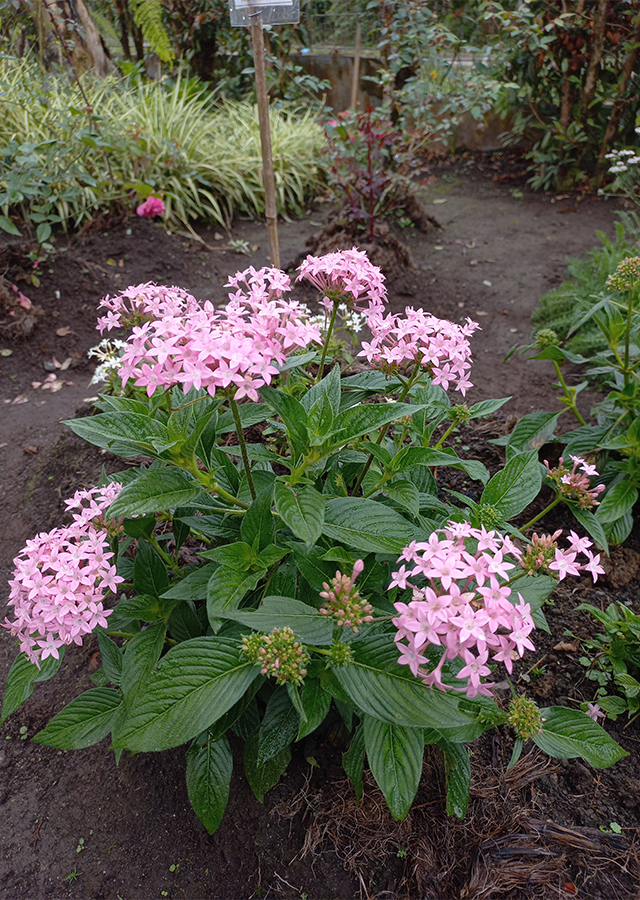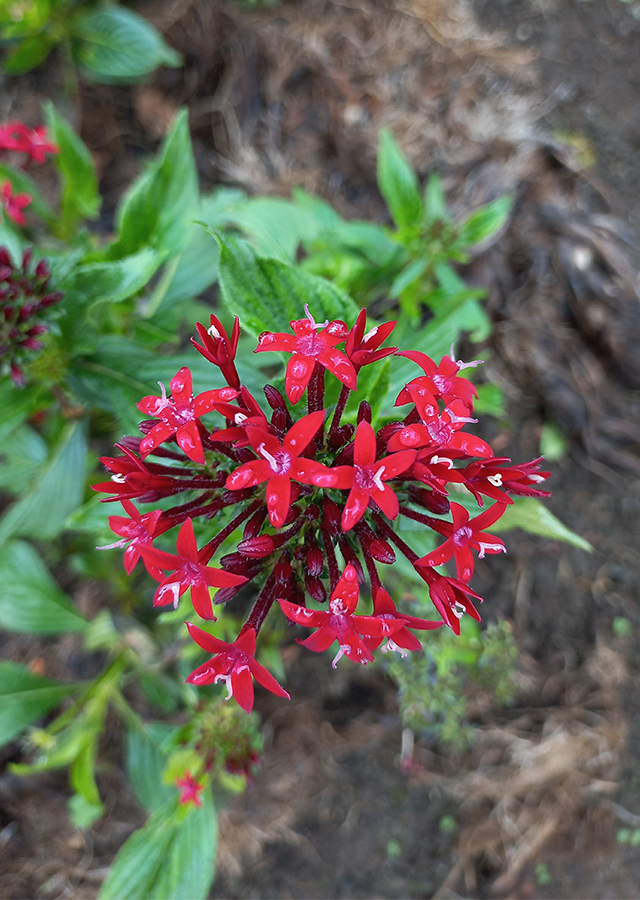Traditional Herbs from Pentas lanceolata
diarrhea
- Take the leaves or roots of pentas flowers\u00a0then wash them until clean.
- Boil the ingredients until they boil.
- Let them sit until warm/cold.
- Strain then give a drink to babies who suffer from diarrhea.
- Can also be given through the nose,\u00a0this method may be painful and is usually applied to babies and young children\u00a0if they refuse to drink the concoction.
ulcers
- Take the leaves or roots of the flower stage\u00a0then wash until clean.
- Boil the ingredients until boiling.
- Let stand until warm/cold.
- Strain then drink.
What is Pentas lanceolata Looks like??



Parts of Pentas lanceolata that could be used
- Leaves
- Flowers
- Roots
Pentas lanceolata Distribution
Pentas lanceolata originates from East Africa and the Arabian Peninsula. Its original distribution range stretches from Ethiopia to Mozambique, Yemen and Saudi Arabia. This plant has been introduced as an ornamental and potted plant throughout the world and can now be found and naturalized throughout tropical and subtropical regions. Pentas lanceolata is widely cultivated as an ornamental plant and potted plant. It is also used in traditional African medicine. Parts of the plant are used as a medicine for tapeworms, itchy rashes, acne, malaria, skin diseases, gonorrhea, syphilis, and as a laxative.Agroecology of Pentas lanceolata
Pentas flowers grow best in warm, humid habitats with an average annual temperature of 27 °C. Although this species tolerates a variety of soil types and textures, it prefers well-drained soil with a pH of 6.1 to 8.5. P. lanceolata thrives in full sun but can also tolerate partial shade conditions. This plant can also adapt to growing in environments that lack water, such as dry bushes and semi-arid habitats.
Morphology of Pentas lanceolata
- Stems are rectangular, pilosulous medium to dense, the older the villi often become bald.
- Leaves are dark green, opposite leaves are ovate to lanceolate with flat edges throughout (8-14 cm long). Leaves are very veined and pubescent (hairy).
- Flowers\u00a0are star-shaped, 5-petaled 1-1.5 cm wide and appear in large terminal clusters known as corymbs free.
- The dry, cracked fruit is known as a capsule (4-5 mm long).
Cultivation of Pentas lanceolata
For generative propagation by seed, sow the seeds on the soil surface and germination will occur in 5-12 days when the daily outdoor temperature is around 22 °C. Propagation can also be done vegetatively using stem cuttings.
Pentas lanceolata, more details :
Chemical Content of Pentas lanceolataAlkaloids, flavonoids, carbohydrates, phenols, terpenoids, coumarins, phytosterols and quinones.
Benefits of Pentas lanceolata
As a medicine for tapeworms, itchy rashes, acne, malaria, skin diseases, gonorrhea, syphilis, and as a laxative. Has antiviral, antibacterial and wound healing properties.
Simplisia of Pentas lanceolata
Another Facts for Pentas lanceolata :
Synonym of Pentas lanceolataManettia lanceolata (Forssk.) Vahl, Mussaenda aegyptiaca Poir., Mussaenda lanceolata (Forssk.) Spreng.
Habitus of Pentas lanceolata
Bush. Annual shrub, 30 - 60 cm high
Habitat of Pentas lanceolata
- Forest", "Roadside", "Bush Area", "Grassland
No comments:
Post a Comment